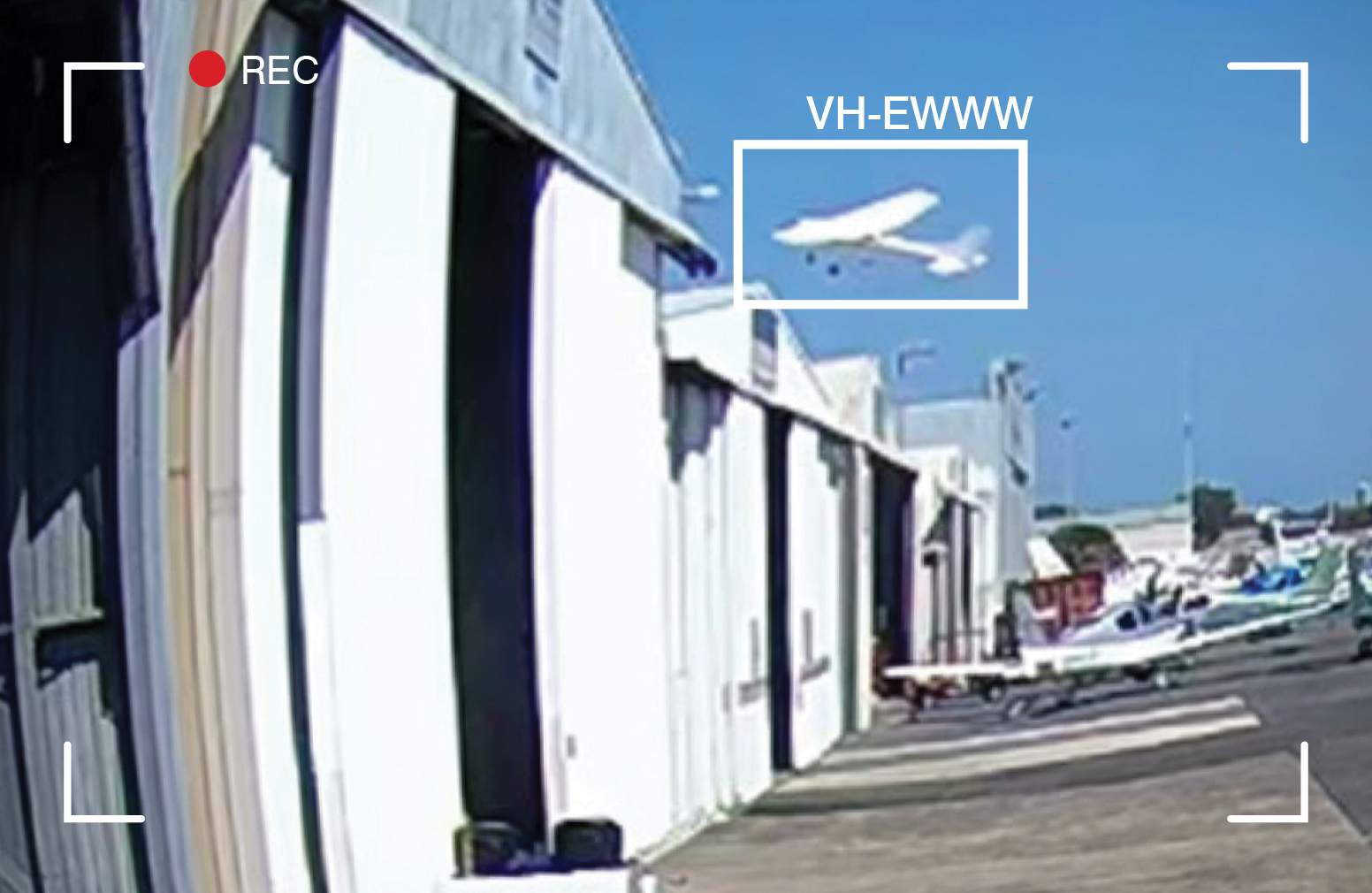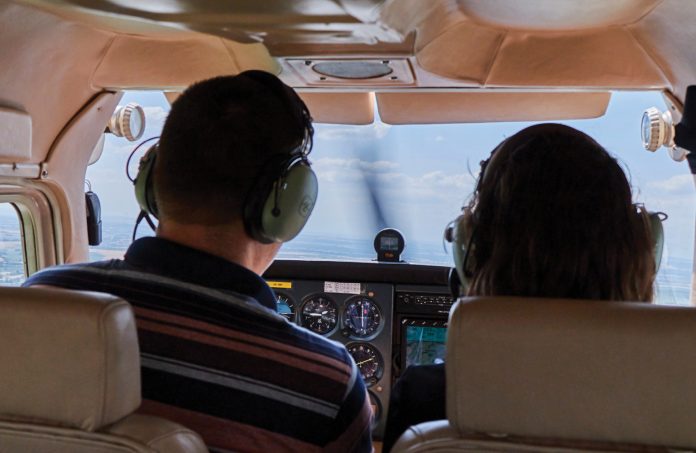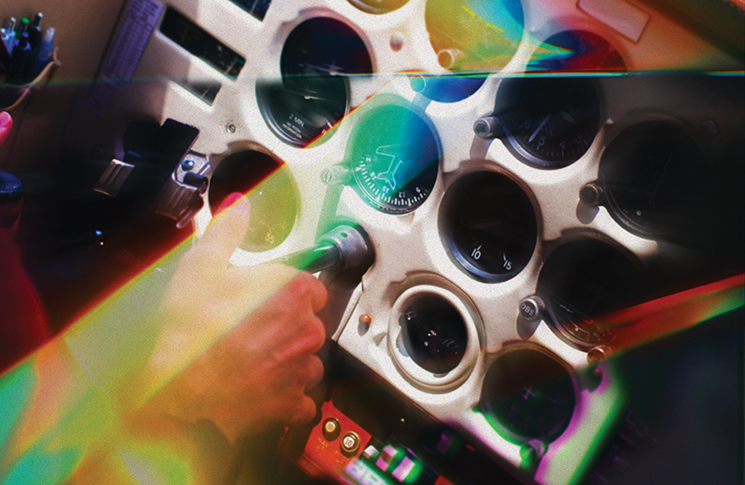The pilot’s art is easy to describe but hard to do: project your mind anywhere between several seconds and several minutes ahead of your present situation and think of what you want the aircraft to be doing at that point. Then make your actions in order to realise that mental picture. The time gap involved can be a few seconds, in landing a small aircraft, to 15 minutes or more, in making an initial approach in a large jet transport. But the principle is the same in everything that flies, including drones, helicopters and balloons.
To a new pilot, this mental time travel can seem a horribly complex addition to the second-by-second task of keeping the aircraft aloft. Flicking one’s mind back and forth between now and soon can feel like balancing spinning plates on broomsticks. Like that circus trick, it’s a delicate equilibrium, but resilience eventually comes with time and increased skill.
The metaphorical plates nearly came tumbling down on 6 February this year when the student and instructor in a Cessna 172R on a training flight from Gold Coast Airport lost control of the situation when trying to follow an additional instruction from ATC during the landing approach.
The aircraft had taken off about 11:38 local time and flown to northern NSW for practice manoeuvres. It then flew north-east to Casino aerodrome where the student flew 5 circuits, before departing about 13:54 to return to Gold Coast Airport. About 25 minutes later when the aircraft was about 10 nm south-west of Gold Coast Airport, the aerodrome controller issued a clearance to track direct to the airport at 1,500 feet and advised the crew to expect runway 32. Soon after, they received a clearance to descend to 1,000 feet as they tracked for a right base for 32.
About 40 seconds later, things went off script. The controller issued an amended clearance to the much shorter runway 35 and asked the Cessna crew whether they could maintain ‘best speed all the way in to crossing the runway’. This request was to help with sequencing with other faster aircraft nearby.
The Cessna was at 1,000 feet and 1.9 nm from the runway 35 threshold. The instructor later told the Australian Transport Safety Bureau (ATSB) they were unsure how to comply with that instruction. In other flights, best speed had only been requested up until the commencement of an approach. The instructor directed the student to reduce the throttle to idle and lower the aircraft’s nose. The student remembered looking at the instructor and shaking their head.
The ATSB said: ‘The student’s assessment was probably due to inexperience, having only landed on runway 35 once before. Had they been cleared to commence the approach from that position, a landing should have been readily achievable, with an approach profile of about 2.4 degrees.’
A stabilised approach profile is generally about 3 degrees. The approach profile that followed the confusion and compliance was about 5 degrees. The student lowered flaps to 10 degrees but could not lower them further because the aircraft was above the 85 knots maximum for further extension. At 1 nm out, they were at 95 knots groundspeed, and 500 feet.
The controller cleared them to land on runway 35 and make a 66-degree turn into taxiway Golf at the same time as forming an expectation that the Cessna would probably go around. At 100 feet over the threshold, the aircraft was at 90 knots (about 80 knots groundspeed) – about 25 knots faster than the normal approach speed of 65 knots. The aircraft floated along the runway before it touched down and bounced. By this time the controller had pressed the button for the aerodrome crash alarm.
Not surprisingly, the end of runway 35 was fast approaching. The instructor took over control from the student and attempted to brake and turn the aircraft on to taxiway Golf, despite the controller’s clearance, unheard in the tension of the moment, to ‘turn up Charlie if need be’. This would have only been a 20-degree turn.
Attempting to turn into Golf, the aircraft veered towards a drainage ditch. Now the instructor applied back pressure on the control column and full power for a go-around. The nose went up and the rear fuselage and tail struck the ground, but the aircraft took off – with maintenance hangers directly in front of it. The instructor recalled the stall warning sounding and aiming for the lowest of the roofs that loomed ahead. Security footage shows the aircraft missing the hangars by a few metres. After an anticlimactic circuit, the Cessna landed on runway 32.
Misunderstanding: best speed, best guess
The ATSB found the aerodrome controller issued the ‘best speed’ instruction to the Cessna flight crew to facilitate traffic flow and allow it to land before an inbound Boeing 737. The controller had expected the Cessna crew would maintain a higher speed until the aircraft was a bit closer to the airfield than normal, and then reduce speed appropriately to make a safe landing.
‘Best speed’ is not a standard ATC phrase. The ATSB investigation said, ‘It is up to the pilot to determine what is best in this context, and more generally advise if an instruction is unclear or cannot be complied with.’
For an approach to be stabilised, it must be within parameters such as correct flight path with only small changes required in airspeed, aircraft configuration, rate of descent and all briefings and checklists completed at 500 feet AGL in visual conditions and 1,000 feet AGL in instrument conditions.
The bureau found the aircraft had exceeded the speed for a stabilised approach, but the instructor did not conduct a go-around before landing – the decision point for this is generally 500 feet AGL – or while on the runway. It said, ‘Pilots are to always be ready to conduct a go-around during the approach if any desired flight parameter, such as aircraft configuration, vertical speed, airspeed, or attitude, cannot be achieved.’
Analysis: is this sort of thing normal?
The ATSB identified 4 contributing factors:
- The air traffic controller’s requirement to maintain best speed to the runway, combined with the instructor’s interpretation of the instruction, resulted in an excessively fast approach.
- Although the aircraft exceeded the speed for a stabilised approach, the instructor did not conduct a go-around prior to landing or while on the runway.
- The excessive landing speed resulted in reduced braking effectiveness and a loss of control during the turn onto the taxiway.
- Following the loss of control, a go-around was initiated to avoid a drainage ditch, resulting in a ground strike and near collision with hangars located on the eastern boundary of the airport.
The aircraft operator took several safety actions in the aftermath:
- reviewed its standard operating procedures for stabilised and unstable approaches
- reviewed training material and sequences for instructors and students, including human factors aspects regarding communication, decision-making and assertiveness
- held discussions with the instructor team focused on training challenges at Gold Coast Airport for non-standard air traffic control requests and clearances, including refusal of clearances considered operationally unacceptable.

More broadly, this incident can be analysed in 2 ways: in cause-and-effect terms, which becomes a fruitless argument over whether the controller’s use of a non-standard but fairly widespread phrase (which both pilots in the Cessna had heard before) was the initiator, or whether lack of situational awareness in the cockpit was the prime factor.
A more productive approach is to think in system terms, which produces some unsettling insights. A simple misunderstanding had caused a safety system’s defences to collapse like a house of cards and only good fortune and a late display of stick and rudder skill in extremis from the instructor prevented a tragedy. This event could be described using Charles Perrow’s concept of a normal accident, one that arises unpredictably but inevitably from the complexity of the system surrounding and governing it. Perrow saw these accidents as inevitable in Normal Accidents, his 1984 sociological analysis of nuclear power generation. ‘It is the interaction of the multiple failures that explains the accident,’ he wrote.
An alternative and more optimistic school of thought is high reliability theory, which takes inspiration from organisations that manage hazardous tasks safely, or have reduced their accident rates. Elements of high reliability thinking can be seen in the training organisation’s reaction to the rude shock of this very near miss. Things that had been taken for granted were now re-examined, but in a true high reliability organisation this happens constantly, although never routinely.
High reliability thinking (of which safety management systems are a subset) would point out there were alternatives to speeding the Cessna’s approach: it could have been asked to fly an orbit, which would have resulted in a slightly larger bill for the student, but cost should never override safety decisions.
Terms and procedures could have been more tightly defined, in anticipation of something going wrong for reasons yet to be precisely identified, or what US Secretary of Defence Donald Rumsfeld called ‘known unknowns’. The controller could have requested a go-around for sequencing, when it was evident the Cessna’s approach was too fast. The drainage ditch could have been eliminated as a foreseeable hazard.
And the pilot in command could have said one of 2 things: ‘Say again’ to eliminate any confusion about the procedure or ‘unable to comply’, as was their right – and yours too.
Only good fortune and a late display of stick and rudder skill in extremis from the instructor prevented a tragedy.





